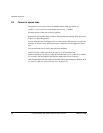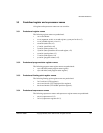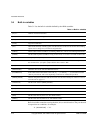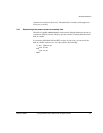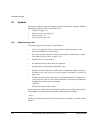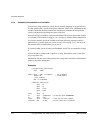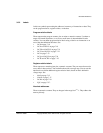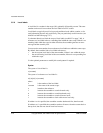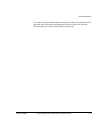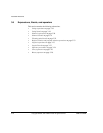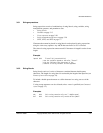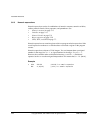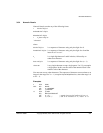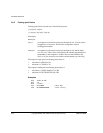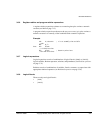
Assembler Reference
3-16 Copyright © 2000, 2001 ARM Limited. All rights reserved. ARM DUI 0068B
3.5.6 Local labels
A local label is a number in the range 0-99, optionally followed by a name. The same
number can be used for more than one local label in an ELF section.
Local labels are typically used for loops and conditional code within a routine, or for
small subroutines that are only used locally. They are particularly useful in macros (see
MACRO and MEND on page 7-27).
Use the
ROUT
directive to limit the scope of local labels (see ROUT on page 7-68). A
reference to a local label refers to a matching label within the same scope. If there is no
matching label within the scope in either direction, the assembler generates an error
message and the assembly fails.
You can use the same number for more than one local label even within the same scope.
By default, the assembler links a local label reference to:
• the most recent local label of the same number, if there is one within the scope
• the next following local label of the same number, if there is not a preceding one
within the scope.
Use the optional parameters to modify this search pattern if required.
Syntax
The syntax of a local label is:
n{routname}
The syntax of a reference to a local label is:
%{F|B}{A|T}n{routname}
where:
n
is the number of the local label.
routname
is the name of the current scope.
%
introduces the reference.
F
instructs the assembler to search forwards only.
B
instructs the assembler to search backwards only.
A
instructs the assembler to search all macro levels.
T
instructs the assembler to look at this macro level only.
If neither
F
or
B
is specified, the assembler searches backwards first, then forwards.
If neither
A
or
T
is specified, the assembler searches all macros from the current level to
the top level, but does not search lower level macros.



